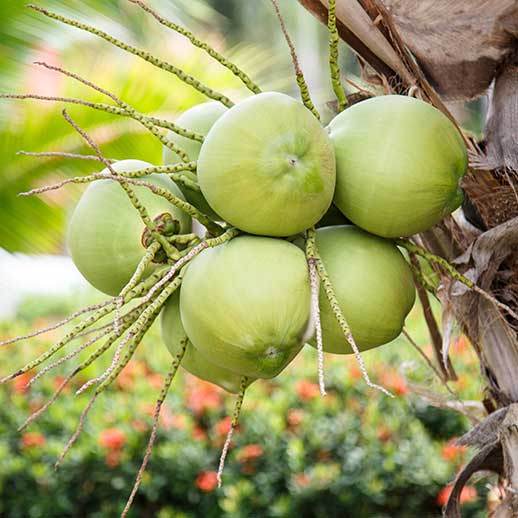1.) Grimwood BE. Coconut Palm Products: Their Processing in Developing Countries. Rome, Italy: Food & Agriculture Organization of the United Nations, 1975.
2.) https://www.itis.gov/servlet/SingleRpt/SingleRpt?search_topic=TSN&search_value=500043#null
3.) https://www.nrcs.usda.gov/Internet/FSE_PLANTMATERIALS/publications/flpmctn12686.pdf
4.) Murray DB. Chapter 14: Coconut Palm. Ecophysiology of Tropical Crops. Ed. Alvim P de T, Kozlowski TT. New York, NY: Academic Press, 1977.
5.) https://www.hsph.harvard.edu/nutritionsource/food-features/coconut-oil/
6.) Ng SP, Tan CP, Lai OM, Long K, Mirhosseini H. Extraction and characterization of dietary fiber from coconut residue. J Food Agric Environ 2010;8(2):172-177.
7.) https://source.wustl.edu/2011/06/deep-history-of-coconuts-decoded/
8.) Wanten, GJ; Naber, AH (2004). "Cellular and physiological effects of medium-chain triglycerides". Mini Reviews in Medicinal Chemistry. 4 (8): 847–57. doi:10.2174/1389557043403503
9.) M.A. Reger, S.T. Henderson, C. Hale, B. Cholerton, L.D. Baker, G.S. Watson, K. Hyde, D. Chapman, S. Craft Effects of beta-hydroxybutyrate on cognition in memory-impaired adults Neurobiol. Aging, 25 (2004), pp. 311-314
10.) Babayan VK. Medium chain triglycerides and structured lipids. Lipids 1987;22:417-20.
11.) Clegg ME. Medium-chain triglycerides are advantageous in promoting weight loss although not beneficial to exercise performance. Int J Food Sci Nutr. 2010 Nov;61(7):653-79.
12.) McCarty MF, DiNicolantonio JJ. Lauric acid-rich medium-chain triglycerides can substitute for other oils in cooking applications and may have limited pathogenicity. Open Heart. 2016 Jul 27;3(2):e000467.
13.) Mumme K, Stonehouse W. Effects of medium-chain triglycerides on weight loss and body composition: a meta-analysis of randomized controlled trials. J Acad Nutr Diet. 2015 Feb;115(2):249-63.
